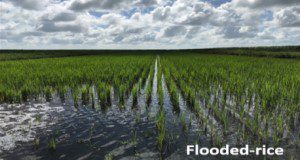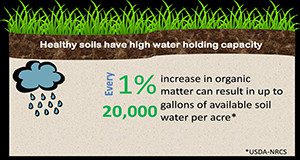Evaluating changes in soil properties associated with flooded fields during the summer months in the Everglades Agricultural Area (EAA) provides us an opportunity to assess the effect of soil management associated with flooded versus dry-fallow field conditions on Histosols. This information will be beneficial to current and potential growers farming flooded rice in south Florida, as well as Extension agents who work on rice and soil conservation agencies such as the USDA Natural Resources Conservation Service (NRCS). This new 6-page publication was written by Jehangir H. Bhadha, Jay Capasso, Abul Rabbany, Nan Xu, and Matthew VanWeelden, and published by the UF/IFAS Department of Soil and Water Sciences.
https://edis.ifas.ufl.edu/ss697
Tag: Jay Capasso
Wetlands as a Tool for Water Treatment
Wetlands are often referred to as "nature's kidneys" because of their ability to remove pollutants from water via storage in the soil and vegetation, as well as through losses to the atmosphere. This 7-page fact sheet written by Jay Capasso, Lisa Krimsky, and Jehangir Bhadha and published by the UF/IFAS School of Forest Resources and Conservation provides a general overview of the function and structure of large-scale treatment wetlands and the services they provide.
http://edis.ifas.ufl.edu/fr419
Raising Soil Organic Matter Content to Improve Water Holding Capacity
Just like a sponge, soils with high organic matter (OM) can absorb and hold water during rainfall events and deliver it to plants during dry spells. Water is increasingly becoming the most limited natural resource supporting agriculture, but growers can improve their water storage capacity by raising their soil’s OM content. This 5-page fact sheet demonstrates how soil OM content can help increase water holding capacity of soils and describes the laboratory procedure to measure WHC. Written by Jehangir H. Bhadha, Jay M. Capasso, Raju Khatiwada, Stewart Swanson, and Christopher LaBorde, and published by the UF/IFAS Department of Soil and Water Sciences, October 2017.
http://edis.ifas.ufl.edu/SS661
Tools for Evaluating Soil Health
Soil health is a term synonymous with soil quality. It refers to the chemical, biological, and physical characteristics that influence a soil’s ability to function sustainably and to satisfy the needs of humans, support plants, and cycle elements, water, and energy between earth systems. This four-page fact sheet identifies ways to evaluate soil health. Written by Jehangir H. Bhadha, Jay Capasso, Robert S. Schindelbeck, and Allan R. Bacon and published by the Department of Soil and Water Sciences.
http://edis.ifas.ufl.edu/ss657



